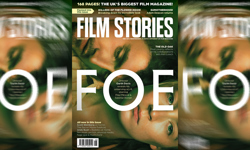Here’s a thing to make you think: on SportsDirect.com, I can buy a pack of 10 Donnay trainer socks for £1.49 – that’s 15p each.
Meanwhile, on Net a Porter’s e-commerce site, products such as a Versace gown that costs £4,410.00 are perfectly normal.
The products sold on both sites are as wildly different as their moving forces: the ultra chic, sleek, Natalie Massanet, and the founder and boss of Sports Direct - controversial, beer-loving, Newcastle-shirt wearing, Mike Ashley.
Yet both are following similar content-led marketing strategies: turning themselves into publishers with paid-for print titles.
Last month saw Forever Sports hit the streets: priced at £2.00, it comes in at 132 pages and has boxer Floyd Mayweather on the cover. Other content includes features on Rio, the new sport of footballgolf, and athletics. Produced by Haymarket Network, it’s got elements of Stylist and Men’s Health, all mixed up with nutrition, fashion, performance tips and a dose of gently laddish humour. Multi-sports titles are rare in the UK, so it looks as though, in publishing terms, Forever Sports is creating a new category for men aged 18-to-30.
That followed February’s launch of Net a Porter’s quarterly Porter magazine, priced at £5.00, 282 pages thick, and weighing in at a thumping 1lb 12oz. While Massenet and her colleagues dance around the subject, the in-house produced Porter is positioned fair and square against the likes of Vogue; you’ll find the two on the same newsstand shelf. The global print run is said to be between 350,000 and 400,000 and the title is available, as they say, from all good retailers around the world.
In short, both are paid-for publishing ventures.
Both suggest some sort of re-orientation of the world of publishing and its role for content. The rediscovery of print as a medium with which to reach savvy, upmarket women and sports-oriented men sounds, on one level, a bit retro.
On another, however, it’s counter-intuitive. Clicks, not bricks, are surely the future, and digital publishing likewise: Net a Porter is a digital e-commerce venture, and Sports Direct, while it has a large bricks-and-mortar presence, is ramping up its e-commerce operations. According to its latest company financials, e-commerce now accounts for 15.5pc of total sales, up 43pc year-on-year.
So why become paid-for print publishers, and why produce titles that are closer in spirit to commercial competitors than, say, long-established customer titles from, say, Boots, M&S or John Lewis where the content is closely and explicitly tied to the host brand?
In the broadest sense, the answer has to be image. In Net a Porter’s case, there is a symbiotic link in consumers and brand’s minds between high-end fashion and glossy print. Porter can therefore be said to legitimise, as well as proselytise, Net a Porter. It may also act as a hook to bring some upmarket brands and designers, which have so far resisted having their products sold by it, onto the Net a Porter platform.
Similarly, Sports Direct has an image issue. Unusually for a retailer, it is also a brand owner and in the last two years has moved aggressively to buy youth fashion brands like Firetrap, SoulCal, Kangol and Voodoo Dolls – all of which command higher margins than your average Slazenger or Everlast (two more of its brands) t-shirts.
While its pile-it-high, sell-them-cheap stores are incredibly successful – its latest quarterly trading statement shows sales up 11pc to £655m and gross profits up almost 15pc – they don’t suggest cool, on-trend, youth fashion.
But if Sports Direct can prioritise its retail brands over its retail positioning, then over time it will become known as a fashion destination wherein lie higher margins. Positioning its brands in a cool, contemporary, editorial environment such as Forever Sports starts the ball rolling in that direction.
The keys for both titles, of course, are quality and credibility. Both, in their own way, are quality reads as you would expect in any paid-for title, and comparative with the likes of Vogue or Shortlist. I’m not into boxing, but Forever Sports’ profile of Floyd Mayweather is as good a piece of sports writing and journalism as I’ve read in a long time.
Credibility is, to put it crudely, a function of whether, as readers, we’re being embraced under false pretences. In other words, is the sales message crude and interruptive, and do we think we’ve parted with our cash only to be sold to?
The answer in both cases is ‘no’. While Porter is backed by Net a Porter technology that makes everything ‘shoppable’ – meaning you can download an app, scan the pages and go straight to make a purchase via the website or those of advertisers – the sell is low-key. There are no ‘buy-now’ starbursts on any pages, and it is only on p62 that you find the information about the app.
Forever Sports is similarly backward when it comes to selling. The style / kit / product pages contain a smattering of Sports Direct brands, but they are given equal treatment with fashion items from Primark, Zara, Selfridges and John Lewis. There is no, as you might say, undue prominence.
One test for such marketing-led publishing ventures, however, is this: as a reader, can you identify that these titles are retailer-published, and if you do, do you care?
Porter’s roots are more obvious, if low-key. Inside the O of Porter on the masthead there is a small message – powered by Net a Porter – and the editor’s letter makes the magazine’s provenance clear. Other than that, there is no suggestion the title is pursuing a nakedly commercial agenda. Of course, it makes it easy to buy the products, but isn’t that what most readers want anyway? So, Porter passes the test.
Forever Sports’ parentage is virtually impossible to divine (other than the fact that it is available in its stores) and the ‘sell’ is invisible. Sure, some of its brands are prominent advertisers, and SportsDirect.com has road-blocked the ad pages from 122-129 at the arse-end of the title, but that just looks like canny media buying and placement. In fact, if there’s one thing that’s frustrating, it is that it could have made the move from view to purchase a little easier.
The ultimate test, of course, is performance – but not strictly in financial terms. I suspect that, as long as neither title loses money and builds the right brand metrics, they’ll be around for a while.












